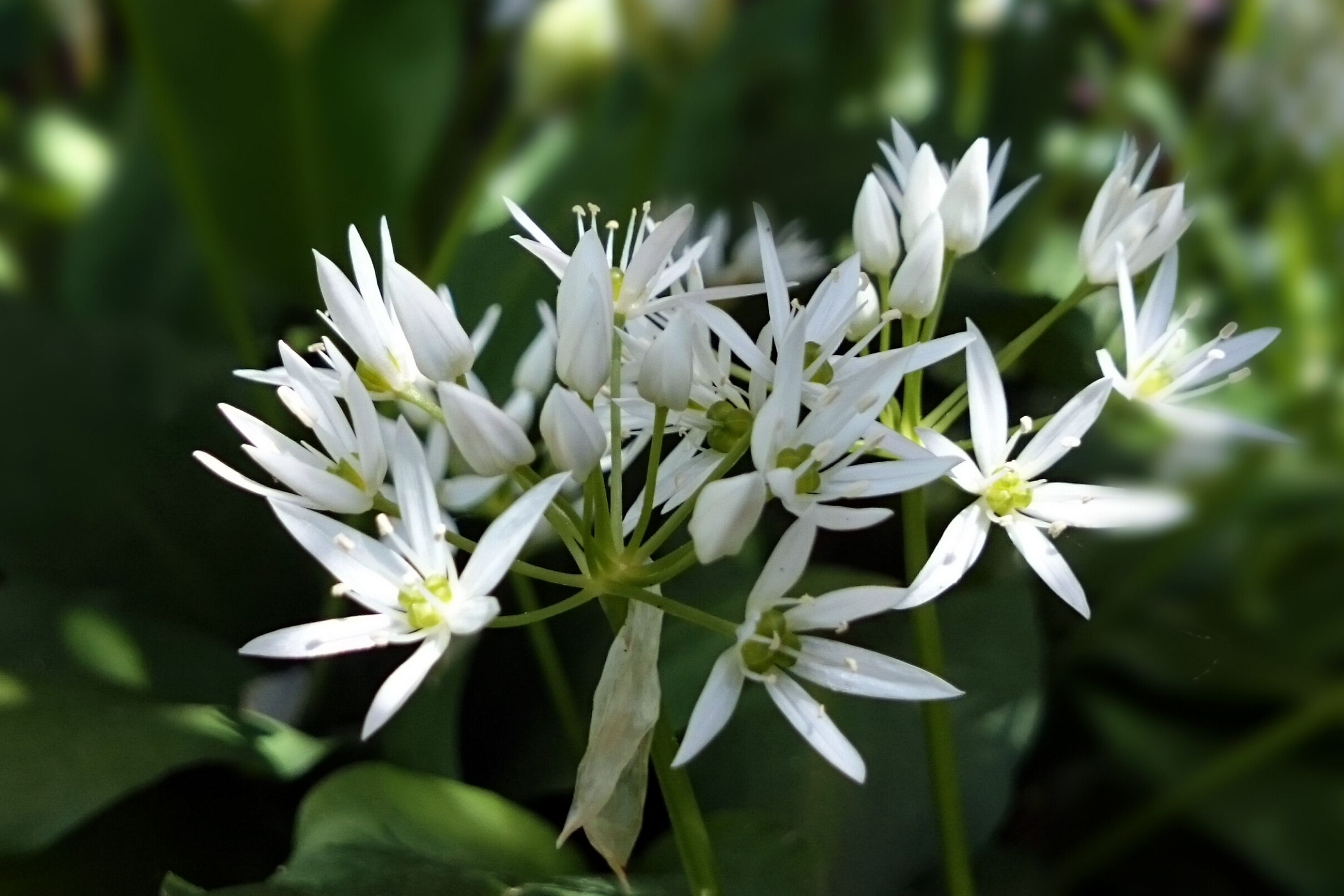Wild garlic
(Allium ursinum)

Description
Allium ursinum, commonly known as wild garlic, is a plant species belonging to the Alliaceae family. It is a perennial herb that is native to Europe and Asia. Wild garlic has been used for culinary and medicinal purposes for centuries and is popular for its distinctive flavor and health benefits. In this article, we will discuss the various aspects of Allium ursinum, including its history, characteristics, cultivation, and uses. History and Distribution: Wild garlic has a long history of human use, dating back to ancient times. The ancient Greeks and Romans used wild garlic for medicinal purposes, and it was also used as a flavoring agent in their cuisine. The plant was also used in the Middle Ages as a remedy for various ailments, including high blood pressure, asthma, and rheumatism. Allium ursinum is native to Europe and Asia and can be found growing in the wild in many parts of the world. The plant is particularly abundant in damp, shady woodlands, and is often found growing alongside other woodland plants such as bluebells and wood anemones. Characteristics: Allium ursinum is a herbaceous perennial that grows to a height of 30-50cm. The plant produces narrow, lance-shaped leaves that are up to 25cm long and 2cm wide. The leaves are dark green in color and have a distinctive garlic-like aroma. The plant also produces a tall stem that can grow up to 60cm in height. The stem is topped with a cluster of small white flowers that bloom in the spring. Cultivation: Allium ursinum is a relatively easy plant to grow and is well-suited to growing in a range of soil types. The plant prefers a slightly acidic soil with good drainage and plenty of organic matter. It also prefers a cool, damp environment, and is best grown in a shaded area. Propagation of Allium ursinum is typically done through division. The plant can be divided in the spring or autumn, and each division should contain several bulbs. The bulbs should be planted around 10cm apart and around 5cm deep in the soil. The plant will grow slowly in the first year but should establish well and produce a good crop of leaves in subsequent years. Uses: Allium ursinum is primarily used as a culinary herb, and its leaves are used as a flavoring agent in a range of dishes. The leaves have a strong garlic-like flavor and can be used in salads, soups, and sauces. The plant is particularly popular in Eastern Europe, where it is used extensively in traditional dishes such as borscht and potato salad. In addition to its culinary uses, Allium ursinum also has several medicinal properties. The plant contains several compounds that have been shown to have antifungal, antibacterial, and anti-inflammatory properties. It has also been used traditionally to help lower blood pressure and cholesterol levels. Conclusion: Allium ursinum is a versatile plant that is valued for its culinary and medicinal properties. The plant is easy to grow and is well-suited to a range of soil types and growing conditions. Its leaves have a strong garlic-like flavor and can be used in a range of dishes, while its medicinal properties make it a valuable herb for treating various ailments. Whether you are a seasoned cook or a lover of herbal remedies, Allium ursinum is a plant that is well worth growing.
Taxonomic tree:







